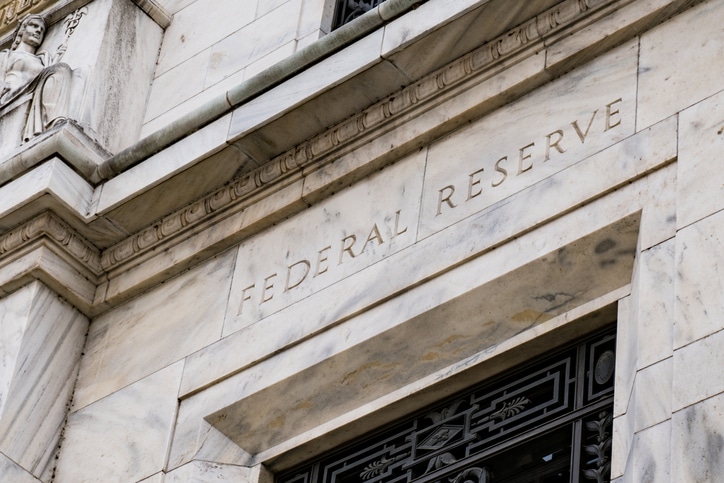The Federal Reserve’s toolkit consist of two blunt tools: the fed funds rate + quantitative easing. In this month’s contribution we’ll discuss the potential short and long-tail impacts of both.
On Wednesday (5/4/2022), in an effort to bring down rising inflation without disrupting economic activity, the Federal Reserve boosted interest rates by 50 basis points (.50%).
Like downing a Pedialyte following a three-day bender, the markets initially reacted positively. However, nausea quickly set in and the previous day gains were quickly reversed. By the end of the following trading day, ol’ S&P 500 and it’s tech pal Nasdaq were both sitting on the toilet holding trashcans, down 3.6% and 5% respectively. The single worst day for the market since June 2020.
In fact, last week marked the fifth consecutive weekly decline in the S&P 500, it’s longest losing streak since June 2011.
April CPI data released the following Wednesday (5/11/2022) showed another upward inflation surprise (above analyst expectations) and suggests that the deceleration is going to be painstakingly slow.
What’s going on?
In short: A lot.
- Covid Supply & Demand Constraints: Domestically, although things are beginning to look better, the dust has still not settled from the logjams created by Covid. Internationally, China’s most recent bout of Covid-19 lockdowns has reduced the supply of Chinese exports and dampened demand for imports.
- Oil Shock: Sanctions against Russia are forcing countries reliant on Russian oil to explore other energy suppliers/solutions which has driven up global oil prices.
- Inflation: No matter how transitory the Fed believes inflation may be, they’re no longer sitting around and waiting for the situation to rectify itself. They are now deploying their limited arsenal of blunt tools to bring this down.
This last point re: inflation/Fed tools deserves some extra attention.
Federal Reserve: The Bartender
As already mentioned, the primary tools in the Federal Reserve’s toolkit are:
- controlling the federal funds rates (which impacts interest rates)
- quantitative easing (QE) which introduces new money into the money supply.
In another alcohol analogy, imagine the Fed as our bartender.
Interest rates:
If the bartender wanted to incentivize drinking (helllllllo happy hour!), the bartender could lower the prices which might increase consumption. The drink servers (banks) would let all the patrons (individuals/investors etc.) know that drink prices are down – get ‘em while you can! This is, in effect, what lowering the fed funds rate does for our economy – it lowers the cost of borrowing and incentivizes investment.
Conversely, perhaps the party is really hoppin’ and there’s a line around the corner to get in, the bartender might then increase drink prices (i.e. increase the fed funds rate) to slow down the debauchery (i.e. irrational exuberance).
Quantitative Easing:
QE is the other strategy that the bartender (Fed) deploys to get a dreadfully boring party (i.e. crashing economy) poppin’ again.
In this scenario, you can only order drinks (i.e. do business) with the drink servers (banks). During happy hour, the bartender notices that the servers (banks) aren’t hawking drinks (lending), they have empty trays. To get them up and active again, the bartender loads up the drink trays (i.e. Fed buys long term securities from the open market) but lowers the amount of alcohol in each cup (i.e. the fed’s asset purchases increase the banks’ reserves which results in lowers yields + more money in circulation).
This action results in the drink servers (banks) being flush with heavy trays of drinks (excess reserves) and incentivized to get back out to doing business (lending).
Ugh, yes – monetary policy is nuanced and there are some obvious holes in these oversimplified analogies but hopefully this is kinda helpful?!
A Recent History of Fed Interventions
While the Fed has deployed it’s influence on interest rates by increasing/decreasing the federal funds rate in the past, this tool had traditionally been reserved to rein in inflation and/or unemployment.
However, beginning with Alan Greenspan following the 1987 stock market crash, Federal Reserve chairs began lowering interest rates for one additional reason besides controlling inflation/unemployment: to proactively halt excessive stock market declines. This “Greenspan Put,” as it became known, acted as a form of insurance against market losses.
Since then, the Fed has intervened with lowering interest rates on a number of occasions to minimize stock market volatility/losses: the savings and loan crisis, the Gulf War, Mexican peso crisis, Asian financial crisis, Long-Term Capital Management (LTCM) crisis, Y2K, dotcom bubble, and 2008 financial crisis.
Quantitative easing (QE), on the other hand, is a more recent monetary policy first deployed by Japan in 2001 to stymie the collapse of their financial market. In the US, QE was deployed following the 2008 crisis in three separate waves: in 2009, 2010, and 2012.
As mentioned earlier, QE is when central banks introduce new money into the money supply. In practice, this is done by central banks purchasing longer-term securities from the open market. This action drives up money supply and encourages institutions to keep lending (and investing!).
While it’s the Treasury that controls the printing of money, it’s the Federal Reserve that effectively decides how much money is created (in the form of actual paper money + credit).
What the Fed is doing now
Most recently, as global financial markets began nosediving due to Covid-19 lockdowns, the Federal Reserve stepped in with a broad array of actions to limit the damage.
First, they reduced the fed funds rate to ground zero (0.0%-0.25%) which brought the cost of borrowing to historic lows. They also pursued quantitative easing (QE) which included large purchases of U.S. government and mortgage-backed securities as well as lending to support households, employers, financial market participants, and state and local governments.
Through quantitative easing (QE), the Fed’s balance sheet has now swelled to nearly $9T (nearly double that following the ’08 financial crisis).
The Hangover
The combination of lower interest rates and $9T of QE is like a shot of adrenaline, or a Red Bull Vodka – it gives an immediate bump but a potentially painful come-down.
At wHealth Advisors, while we’re rationally optimistic that the long-term return potential in the stock market remains strong, there a number of hurdles facing the short/medium term:
- Increasing National Deficit: The current national debt is approaching $30T. The 2017 Tax Cuts and Jobs Act resulted in record corporate profits and strong stock market performance. However, the cuts essentially 1) borrowed economic growth from the future and 2) are expected to add $2-2.2T to the national deficit over the next six years. The 2017 tax cuts + QE response to Covid-19 have swelled the deficit and put the US on a “fiscally unsustainable” path, to quote the Government Accountability Office (GAO).
- Tax Hikes Likely: There seems to be little interest in reducing federal expenditures. As such, without extreme austerity, the only other solution to combat rising deficits is increasing taxes (likely impacting both individual/corporate rates).
- Slower Growth: Economists expect 2.3% GDP growth per year, on average, over the next 10 years, even after accounting for expectations of increased economic activity in the near term. This compares to historical average GDP growth of 3.1% per year since 1948.
- Muted 10yr Equity Outlook: A lower economic outlook combined with record high equity valuations has many fund companies bracing investors for lower expected returns going forward. Vanguard forecasts US equities to have a 10yr annualized return between 2.0-4.0% and international equities to range between 5.1-7.1%.
Final Thoughts:
The Fed’s QE actions, creating $9T more or less out of thin air, is somewhat uncharted territory. It will take time to fully understand the ramifications of this. For the time being, we’ve got inflation and a choppy stock market.
In the immediate future, the Fed has made clear that they are willing to increase unemployment to slow down inflation. To do this, the Fed is targeting a 2.25% fed funds rate and aiming to reduce their $9T balance sheet by $1T over next 12 months.
Over the short-medium term, continued stock market volatility will be inescapable. Actively reducing equity allocations in anticipation of, or in reaction to, fed funds rate increases is unlikely to lead to better investment outcomes.
Over the longer-term, investors who maintain a broadly diversified portfolio and use information in market prices to systematically focus on higher expected returns (i.e. exactly what we do for our clients at wHealth Advisors) should be better positioned for long-term investment success.
Resilient financial plans are designed with unpredictable, gloomy outlooks in mind. Please be in touch if you have any questions or concerns regarding your plan’s resiliency for the road ahead.



